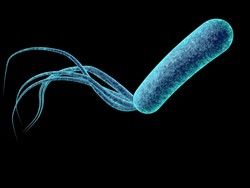Secretion systems in a bacterial pathogen
Pseudomonas aeruginosa is a bacterium that causes life-threatening infections in hospital patients. It uses secretion systems to release toxins and other proteins that cause disease (called factors) into the environment, other bacteria or its host's cells. Scientists recently identified a novel secretion system in P. aeruginosa: the type VI secretion system (T6SS). There are three genes that encode for different versions of this secretion system. Two of them (H2- and H3-T6SS) are not well understood, but characterising them could produce insights into treatments for P. aeruginosa infections. Scientists of the EU-funded T6SS-PSEUDO-EFFECTOR (Identification of novel effectors of the type six secretion systems in Pseudomonas aeruginosa) initiative created a modified strain of P. aeruginosa to help determine the factors it secretes via the different T6SSs. It would also allow them to determine the function of these secretion systems. The scientists inserted DNA that produces an enzyme marker next to the genes of P. aeruginosa that encode for the two secretion systems of interest. They then randomly interrupted the DNA of P. aeruginosa and measured how it affected the amount of marker produced. The team isolated those bacteria that made more or less of the enzyme marker and then looked at the regions of DNA disrupted in their genomes. This enabled them to identify genes that control the H2- and H3-T6SS. Furthermore, they identified strains of P. aeruginosa that have overly active H2-T6SSs. These bacterial strains are a powerful tool for studying the proteins and other molecules secreted by P. aeruginosa via T6SS. This research will allow scientists to identify the role of this T6SS in P. aeruginosa and whether it is a suitable target for developing treatments.







